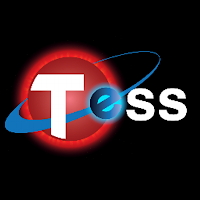NASA - Transiting Exoplanet Survey Satellite (TESS) logo.
May 4, 2021
May the Fourth Be With You!
When the first Star Wars movie was released in 1977, it featured the now-iconic two-sun, “circumbinary” planet Tatooine. At that time astronomers didn’t really know if such solar systems existed. Indeed, the first extra-solar planet wasn’t detected until the early 1990s. And, the first actual circumbinary planet was detected in 2005, and it was a Jupiter-size planet orbiting a system composed of a sun-like star and a brown dwarf.
Fast forward a few decades and researchers working with data from the Transiting Exoplanet Survey Satellite (TESS) discovered the mission’s first circumbinary planet, a world orbiting two stars, as shown in this image from January 2020. The planet, called TOI 1338 b, is around 6.9 times larger than Earth, or between the sizes of Neptune and Saturn. It lies in a system 1,300 light-years away in the constellation Pictor.
Transiting Exoplanet Survey Satellite (TESS)
The stars in the system make an eclipsing binary, which occurs when the stellar companions circle each other in our plane of view. One is about 10% more massive than our Sun, while the other is cooler, dimmer and only one-third the Sun’s mass. TOI 1338 b’s transits are irregular, between every 93 and 95 days, and vary in depth and duration thanks to the orbital motion of its stars. TESS only sees the transits crossing the larger star — the transits of the smaller star are too faint to detect. Its orbit is stable for at least the next 10 million years. The orbit’s angle to us, however, changes enough that the planet transit will cease after November 2023 and resume eight years later.
Transiting Exoplanet Survey Satellite (TESS): https://www.nasa.gov/tess-transiting-exoplanet-survey-satellite
Image, Animation, Text, Credits: NASA/Yvette Smith/Goddard Space Flight Center.
Greetings, Orbiter.ch



